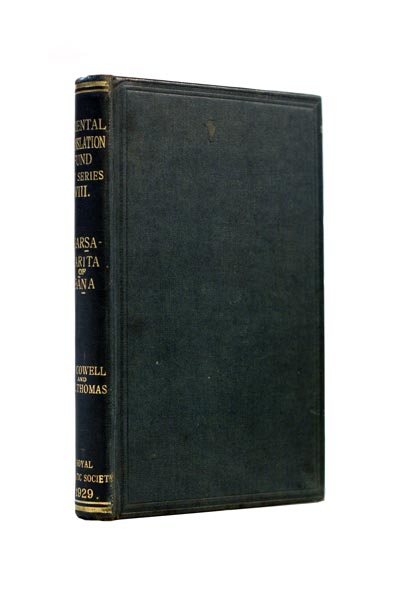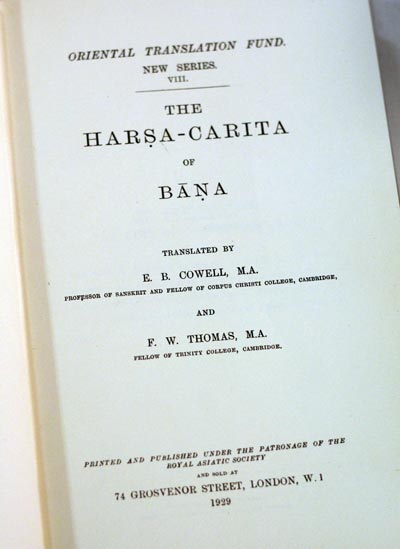About the book (from wikipedia):
The Harshacharita (Sanskrit: हर्षचरित, Harṣacarita) (The deeds of Harsha), is the biography of Indian emperor Harsha by Banabhatta, also known as Bana, who was a Sanskrit writer of seventh-century CE India. He was the Asthana Kavi, meaning Court Poet, of Harsha. The Harshacharita was the first composition of Bana and is considered to be the beginning of writing of historical poetic works in Sanskrit language.
The Harshacharita ranks as the first historical biography in Sanskrit although it is written in a florid and fanciful style. Bana’s detailed and vivid descriptions of rural India’s natural environment as well as the extraordinary industry of the Indian people exudes the vitality of life at that time.
The Harṣacharita, written in ornate poetic prose, narrates the biography of the emperor Harsha in eight ucchvāsas (chapters). In the first two ucchvāsas, Bana gives an account of his ancestry and his early life.
Harshavardhana (c. 590–647), commonly called Harsha, was an Indian emperor who ruled North India from 606 to 647 from his capital Kanauj. He belonged to Pushyabhuti Dynasty. He was the son of Prabhakarvardhana who defeated the Huna invaders and the younger brother of Rajyavardhana, a king of Thanesar, Haryana. He was the founder and ruler of the Empire of Harsha and at the height of his power his empire spanned the Punjab, Rajasthan, Gujarat, Bengal, Odisha and the entire Indo-Gangetic plain north of the Narmada River. Harsha was defeated by the south Indian Emperor Pulakeshin II of the Chalukya dynasty when Harsha tried to expand his Empire into the southern peninsula of India.
After the downfall of the prior Gupta Empire in the middle of the 6th century, North India reverted to small republics and small monarchical states ruled by Gupta rulers. Harsha adopted Buddhism. He united the small republics from Punjab to central India, and their representatives crowned Harsha king at an assembly in April 606 giving him the title of Maharaja when he was merely 16 years old. He established the Empire of Harsha which brought all of northern India under his control. The peace and prosperity that prevailed made his court a center of cosmopolitanism, attracting scholars, artists and religious visitors from far and wide. The Chinese traveller Xuanzang visited the court of Harshvardhan, and wrote a very favourable account of him, praising his justice and generosity.
Harsha, who was a Shaiva by faith, began celebration of religious festivals every five years, at the confluence of three rivers (the Ganga, the Yamuna, and the Saraswati) at Prayaga. On this occasion Harsha donated all his personal earnings among people and returned only in single cloth at his kingdom and start a new journey again. It is said to be the beginning of the famous Kumbh Mela of India which still attracts millions of people from all around the world.



